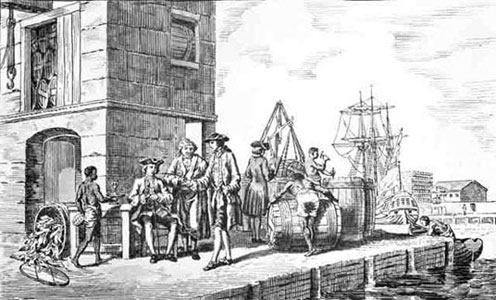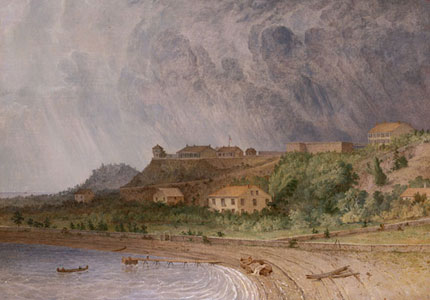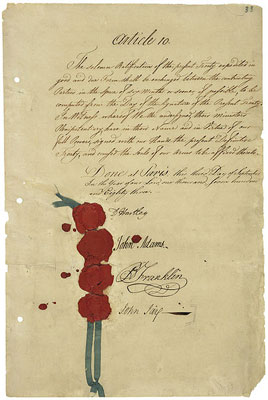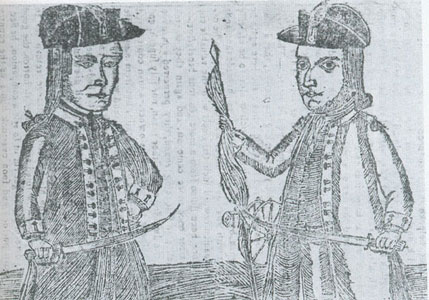 Section Warm-Up
Section Warm-Up
Our current constitution is not the first American constitution. During the American Revolution, the Continental Congress forged a national union under the Articles of Confederation. Congress adopted the Articles in November 1777, but it required the approval of all thirteen states for ratification. This finally occurred in 1781, but during that four year period, legislators prosecuted the war using the Articles as their guide.
In the context of the revolution, colonists were battling a powerful executive (King George III) and courts that upheld his edicts. Avoiding the power of the executive or federal judiciary branch, the Articles put all national power into the Congress. Each state, regardless of population, received one vote in the Congress, but could have as many representatives as they wanted. Any amendments to the Articles required unanimous approval.
Review the following galleria to learn more about the problems the nation faced under the Articles of Confederation.
-

The reasons for the federal government's ineffectiveness in the 1780s lay in the Articles of Confederation. The states, still wary of their years under British authority, retained most important powers for themselves, thus leaving the federal government weak. The challenges facing the new nation highlighted the weaknesses of the federal government. The Confederation Congress, for example, could not levy taxes or regulate trade. So when a postwar depression gripped the economy, the national government could do little to help.
-

The Articles of Confederation also left the government unable to effectively manage foreign policy. Great Britain, still resentful of the upstart Americans, refused to honor its treaty agreement by abandoning its forts and fur trading posts along the Great Lakes. The British also closed their West Indies colonies to American trade. In a further affront, the crown's agents encouraged disgruntled Vermonters to break away from the United States and return to British sovereignty.
-
| Spain, meanwhile, closed the lower Mississippi River to American trade and claimed land west of Georgia granted to the United States in the Treaty of Paris. The Spanish also stirred trouble on the frontier by encouraging American settlers to break away and swear allegiance to their king. With its weak central government, the United States could do little to control its territory west of the Appalachians. |
 |
-

The Confederation Congress did not even have the power to enforce laws or raise an army to maintain order within U.S. borders. In 1786, the depression left many farmers in debt and in danger of losing their land. In Massachusetts, a Continental Army veteran, named Daniel Shays, led a group of disgruntled farmers against the courts to prevent them from initiating foreclosure proceedings. The state militia eventually suppressed the uprising, but Shays' Rebellion spread fears that anarchy could envelop the nation. An increasing number of Americans realized the need for a stronger government.
© 2009 KC Distance Learning. All rights reserved.
 Section Warm-Up
Section Warm-Up






